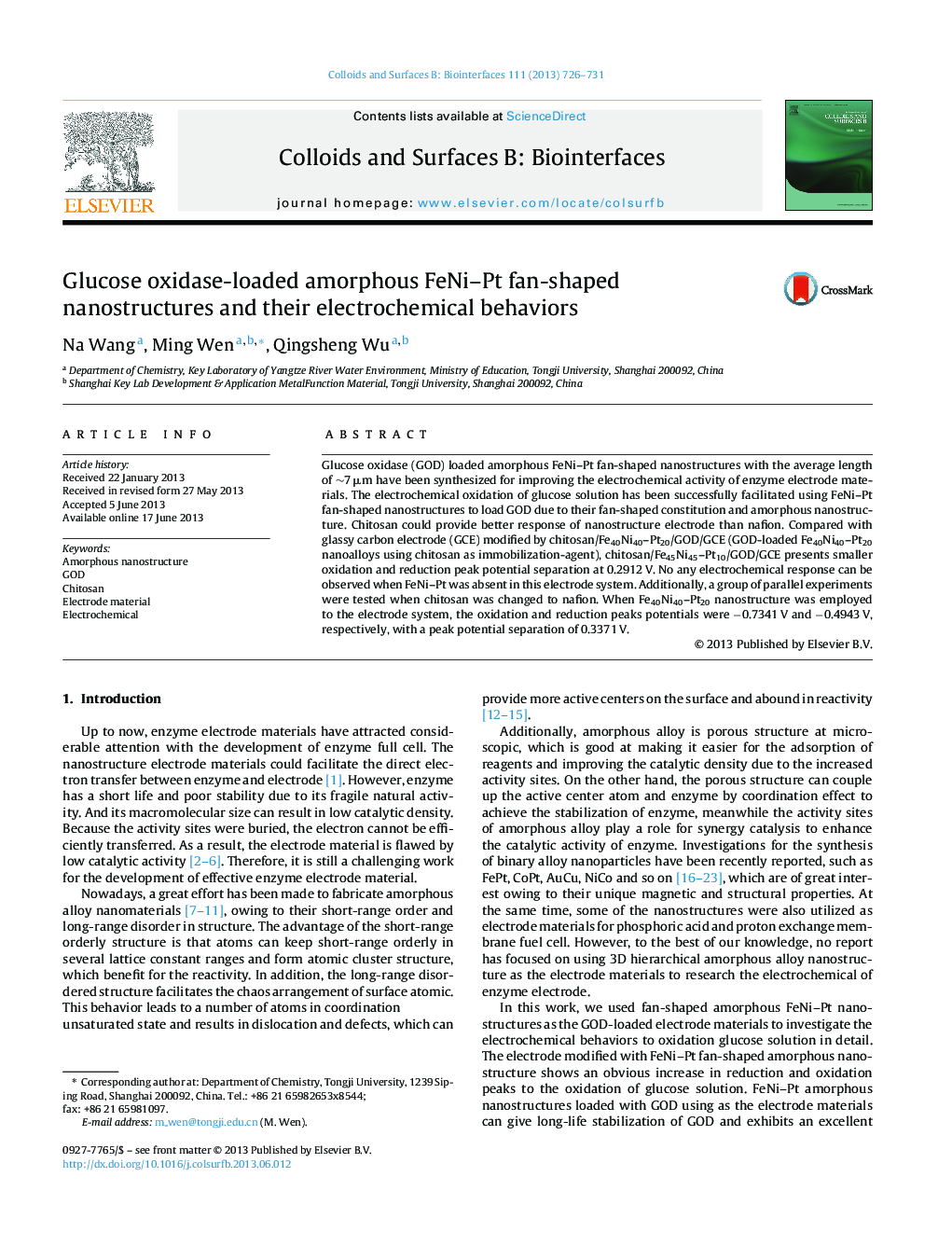| Article ID | Journal | Published Year | Pages | File Type |
|---|---|---|---|---|
| 599875 | Colloids and Surfaces B: Biointerfaces | 2013 | 6 Pages |
•Amorphous FeNi–Pt fan-shaped nanostructure was synthesized through classical hydrothermal method.•The as-synthesized nanoalloy loaded with GOD was used as electrode material.•The electrode materials exhibited an excellent catalytic activity for GOD.
Glucose oxidase (GOD) loaded amorphous FeNi–Pt fan-shaped nanostructures with the average length of ∼7 μm have been synthesized for improving the electrochemical activity of enzyme electrode materials. The electrochemical oxidation of glucose solution has been successfully facilitated using FeNi–Pt fan-shaped nanostructures to load GOD due to their fan-shaped constitution and amorphous nanostructure. Chitosan could provide better response of nanostructure electrode than nafion. Compared with glassy carbon electrode (GCE) modified by chitosan/Fe40Ni40–Pt20/GOD/GCE (GOD-loaded Fe40Ni40–Pt20 nanoalloys using chitosan as immobilization-agent), chitosan/Fe45Ni45–Pt10/GOD/GCE presents smaller oxidation and reduction peak potential separation at 0.2912 V. No any electrochemical response can be observed when FeNi–Pt was absent in this electrode system. Additionally, a group of parallel experiments were tested when chitosan was changed to nafion. When Fe40Ni40–Pt20 nanostructure was employed to the electrode system, the oxidation and reduction peaks potentials were −0.7341 V and −0.4943 V, respectively, with a peak potential separation of 0.3371 V.
Graphical abstractFigure optionsDownload full-size imageDownload as PowerPoint slide
